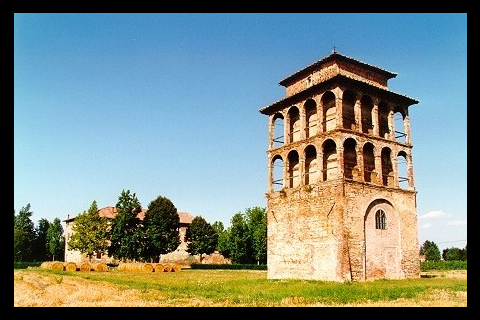-

PALAZZO MARESCOTTI E LA COLOMBAIA DEL FORTINO

- Once again, as is often the case in this area, local history is intertwined with tales of the Bolognese aristocracy, in this case with members of the Marescotti family. They were among the first people to receive the dignitary status of senator from Pope Paul II in 1466 and Galeazzo Marescotti was the first person to be named lifetime senator. It was Galeazzo who ordered construction of the palace, which got underway in 1458. Before the Marescottis, the property belonged to the Bentivoglio family, to whom it had been succeded by the Ghisilieris. This change of hands was “summarized” in the heraldic crests displayed in the loggia, which represent both the Bentivoglio and Marescotti families. There is a lovely tower-shaped dovecote behind the palace, topped with its own open double loggia. Dated to the mid 17th century, but probably older than that, it served to provide pigeon excrement as the most specifically appropriate fertilizer for the hemp crops, one of Bologna's primary economic resources at the time. Although the two buildings are located in an area traditionally known as \"Confortino,\" named after Confortino Conforti, who was the landholder of a number of other local properties, this area was actually owned by the Ghisilieris.The history of these buildings has nothing to do with that of the Confortino church and oratory. Antique cars and farm machinery are on display inside the palace, which is open to visitors the second Sunday in July during the Aia Festival.